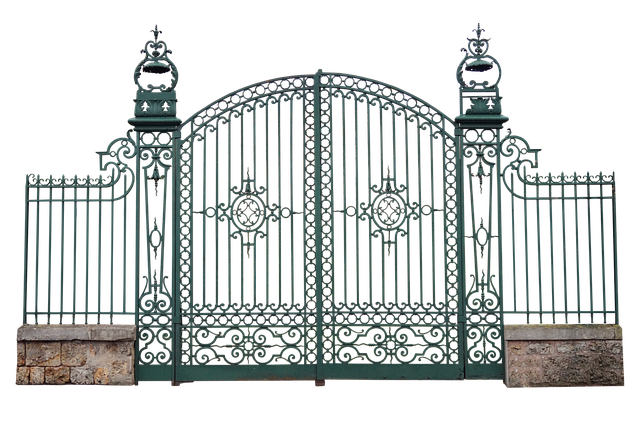In coastal regions, where harsh weather conditions prevail, choosing the right fencing material is paramount. This article explores the benefits of durable wooden fencing as a robust and aesthetically pleasing solution for your coastal property. We delve into the unique challenges of coastal environments and how certain wood species offer exceptional resistance to salt spray, moisture, and strong winds. By understanding these factors, homeowners can invest in a fence that not only stands the test of time but also enhances the natural beauty of their seaside sanctuary.
- Understanding Coastal Fencing Challenges
- Advantages of Durable Wooden Fencing
- Choosing the Right Wood Species
- Installation and Maintenance Tips
- Enhancing Coastal Aesthetics with Wooden Fences
Understanding Coastal Fencing Challenges
Coastal areas present unique challenges when it comes to fencing due to their harsh environments. Strong winds, salty air, and regular exposure to moisture can significantly impact materials over time. Traditional fences often struggle to withstand these conditions, leading to frequent replacements and increased maintenance costs. The primary goal for coastal fencing is to find materials that are not only durable but also aesthetically pleasing, blending seamlessly with the natural surroundings.
Wooden fencing, when chosen carefully, can be an excellent solution. Opting for treated, weather-resistant wood varieties ensures longer lifespans even in coastal settings. These treatments protect the wood from rot, mold, and insect damage, commonly found along coastlines. Additionally, proper installation techniques, such as securing posts deeply into stable soil, can further enhance the fence’s durability against strong winds.
Advantages of Durable Wooden Fencing
Durable wooden fencing offers numerous advantages for coastal areas, where harsh weather conditions and exposure to salt air can be detrimental to traditional materials. Firstly, wood species specifically treated for durability, such as cedar or treated pine, have a long lifespan, resisting rot and pests commonly found in these environments. This longevity significantly reduces the need for frequent replacements, making it an economical choice for property owners.
Additionally, these fences provide excellent aesthetic appeal with their natural beauty and ability to withstand the elements. They can be stained or finished to match various design preferences, ensuring they complement coastal landscapes without compromising structural integrity. Moreover, wooden fencing offers flexibility in terms of height, style, and custom designs, allowing homeowners to create unique boundaries while enjoying the practical benefits of durable protection for their properties.
Choosing the Right Wood Species
When selecting wood for coastal fencing, choosing the right species is paramount to ensure durability and longevity. Different woods have varying resistance to moisture, salt spray, and insect infestation—all common challenges in coastal environments. For instance, treated cedar and redwood are popular choices due to their natural resistance to rot and insects. These woods not only withstand salty sea air but also maintain their aesthetic appeal for years.
Considered among the toughest options, tropical hardwoods like ipe or cumaru offer exceptional durability and beauty. While they might be more expensive, these woods can endure harsh coastal conditions without warping, splitting, or rotting, making them excellent investments for long-lasting fences. Each wood species has unique characteristics, so understanding their pros and cons will help you make an informed decision tailored to your specific coastal needs.
Installation and Maintenance Tips
When installing durable wooden fencing in coastal areas, it’s crucial to ensure proper drainage to prevent water damage. The ground should be graded to direct rainwater away from the fence posts and panels. Consider incorporating a slight slope or adding drainage channels for optimal results. Regular cleaning is also essential; brush off any sand, salt, or debris that might accumulate on the surface.
Maintenance involves occasional staining or sealing to protect the wood from harsh marine environments. Use high-quality, water-repellent treatments designed specifically for coastal fencing. Inspect your fence regularly for signs of rot, cracks, or insect damage and address these issues promptly. Replacing individual panels or sections can extend the life of your wooden fencing with minimal effort.
Enhancing Coastal Aesthetics with Wooden Fences
Wooden fences have long been a beloved feature along coastal areas, seamlessly blending functionality with aesthetic appeal. The natural beauty of wood complements the rugged landscape, creating a harmonious atmosphere that captivates both residents and visitors alike. In particular, durable wooden fencing materials specifically designed for coastal environments offer a unique opportunity to enhance the visual charm while withstanding harsh weather conditions.
These specialized fences are crafted from rot-resistant woods like cedar or treated with protective coatings, ensuring they withstand salty air, strong winds, and frequent rainfall. By strategically incorporating these resilient barriers, coastal communities can preserve their picturesque views, protect private properties, and even create charming pathways or gardens that embrace the unique coastal tapestry.
